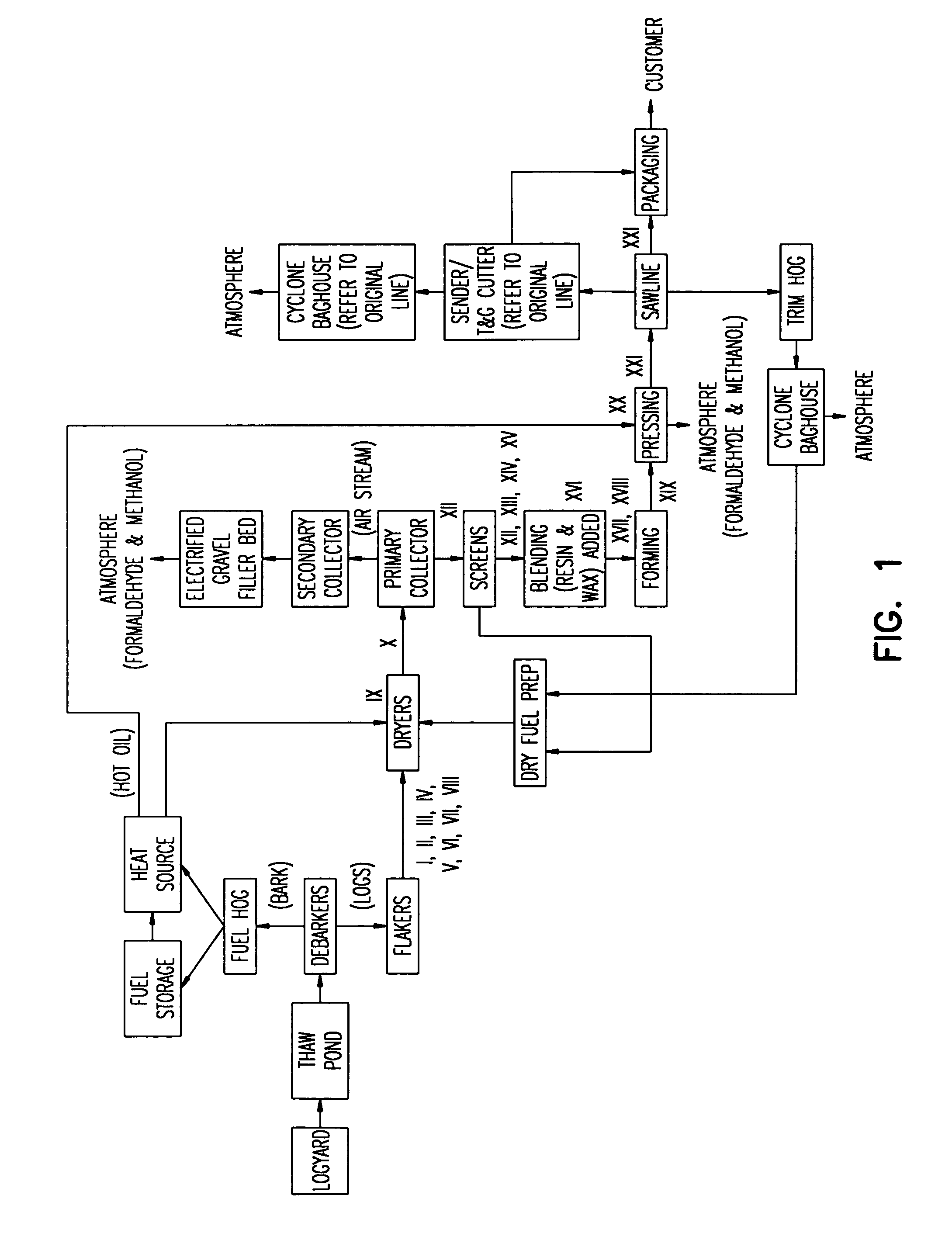Wood-based product treated with silicone-containing material and dianion, and methods of making the same
a technology of silicone-containing materials and wood-based products, which is applied in the field of wood-based products treated with silicone-containing materials and dianion, and methods of making the same, can solve the problems of osb, fungus decomposition, and compounds that are either extremely poisonous or unsuitable, and achieve the effects of effective cure, effective cure and effective cur
- Summary
- Abstract
- Description
- Claims
- Application Information
AI Technical Summary
Benefits of technology
Problems solved by technology
Method used
Image
Examples
Embodiment Construction
[0034]The present invention provides a treated wood-based product having an effective antifungal amount of a silicone-containing material present on at least a portion of at least one outer surface of the wood-based product, and the silicone-containing material at least partially penetrates at least a portion of at least one outer surface of the wood-based product; and a compound having a dianion present on at least a portion of at least one outer surface of the wood-based product, and the dianion optionally at least partially penetrates at least a portion of at least one outer surface of the wood-based product. The present invention also provides methods for manufacturing such treated wood-based products.
[0035]The treated wood-based product can be manufactured via a “hot press” or “in-line” method, or via a “cold press” or “off line” method. As such, each of the components of the treated wood-based product can withstand the manufacturing conditions of any pressing stage involved in...
PUM
| Property | Measurement | Unit |
|---|---|---|
| Temperature | aaaaa | aaaaa |
| Temperature | aaaaa | aaaaa |
| Temperature | aaaaa | aaaaa |
Abstract
Description
Claims
Application Information
 Login to View More
Login to View More - R&D
- Intellectual Property
- Life Sciences
- Materials
- Tech Scout
- Unparalleled Data Quality
- Higher Quality Content
- 60% Fewer Hallucinations
Browse by: Latest US Patents, China's latest patents, Technical Efficacy Thesaurus, Application Domain, Technology Topic, Popular Technical Reports.
© 2025 PatSnap. All rights reserved.Legal|Privacy policy|Modern Slavery Act Transparency Statement|Sitemap|About US| Contact US: help@patsnap.com



